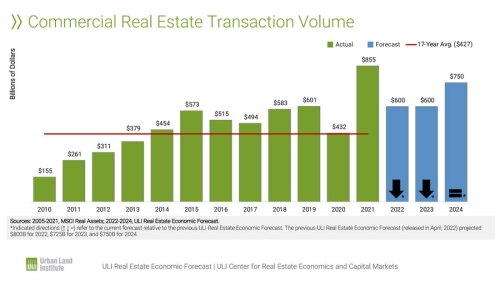Millennials living in the nation’s capital and its close-in suburbs can be characterized as “committed urbanists,” according to a just-released ULI Washington survey. In a panel discussion, ULI Washington chair Yolanda Cole, senior principal and owner of Hickok Cole Architects, noted that “we want to keep our millennials in the city, and this study shows that we are not at imminent risk of losing them.”
This new study, which updated a 2015 survey, included more households with children—an increase from 12 to 20 percent. Almost half (49 percent) of respondents are married or partnered—up from 39 percent in 2015. Homeownership has increased from 28 to 33 percent. And median income has increased over 11 percent—from $66,636 in 2014 to $74,188 in 2017—exceeding the national growth rate. Income for partnered households in the D.C. area has grown even faster, now averaging almost $142,000.
The survey revealed significant differences between younger (age 23–32) and older (33–34) millennials. The older cohort is more likely to be married or partnered (60 percent) and have children (37 percent, as compared with just 7 percent of the younger cohort). Members of the older group also are more likely to own homes (53 percent) and cars (77 percent). Having found success in their urban environments, 56 percent of 33- to 40-year-olds agreed or strongly agreed with the following statement: “I love the D.C. metro area and plan to stay here forever.” The younger group was more tempered, with 43 percent agreeing with that statement, and almost a quarter disagreeing.
Both the 2015 and 2018 surveys were conducted with approximately 1,300 millennials living in defined portions of the Washington, D.C., metropolitan area. About half of the participants were selected randomly by a professional research firm, while the rest responded to ULI Washington’s outreach efforts. The sample could be described as a “survey of the willing,” explained Deborah Brett, who conducted the two studies along with Leanne Lachman, a ULI Trustee and president of consultancy Lachman and associates, and Lawrence Becker.
ULI’s nationwide study of millennials’ housing preferences, conducted by Lachman and Brett in 2015, painted a very different picture of U.S. millennials, not all of whom were benefiting from the post-recession resurgence of major U.S. cities. “Contrary to popular belief, most millennials are not living the high life in the downtowns of large cities, but rather are living in less centrally located but more affordable neighborhoods, making ends meet with jobs for which many feel overqualified, and living with parents or roommates to save money,” according to the report, which has not been updated.
A panel of young professionals moderated by Brant Snyder, vice president of development at PN Hoffman, agreed that the D.C. study’s respondents are a relatively elite group that nonetheless struggles with the high cost of city living. “At what point do people think: I can work from anywhere and live elsewhere for a lot less money?” asked Snyder. “Young people have always left big cities like New York; the economy thrives on young, cheap labor,” commented Erin Talkington, principal of RCLCO. Noted Amy Donin, redevelopment program manager with the Montgomery County (MD) Office of Planning and Development: “Most of my friends with kids have gone back home where their parents can help raise their grandchildren.”

From left to right: moderator Brant Snyder, vice president, PN Hoffman; Hannah Untereiner, senior development associate, Redbrick LMD; Erin Talkington, vice president, RCLCO; Amy Donin, redevelopment program manager, Office of Planning and Development, Montgomery County Department of General Services; and Marvin Poole, director, Investments and Asset Management, Stonebridge Carras; discussing the results of a ULI Washington report at a WeWork facility in Washington, D.C.
So, what keeps millennials—including those with children—from leaving their urban nests? “I love the convenience,” said Marvin Poole, director of investments and asset management at StonebridgeCarras. “It’s about the proximity to work, access to transit, parks where our toddler son can play, and recreational activities.” Added Donin: “Even in the suburbs, convenience to work is a top priority. I love having the extra time.”
This sentiment was reflected in ULI’s new report. More than half of respondents ranked walkability and transit access as critical neighborhood qualities. Other desirable neighborhood features included lots of restaurants, convenient retail, vibrancy, and neighborhood conditions. These factors aren’t just for millennials, said panelist Hannah Untereiner, senior development associate at Red Brick LMD: “You see a lot of seniors moving into these walkable urban areas.”
The Washington, D.C., panelists mused that as millennials’ children grow, parents may focus more on the quality of neighborhood schools. They agreed that many professional couples with young children are happy with the District’s free all-day kindergarten, as well as with local public and private elementary schools. The transition to middle school, however, can catalyze a family’s search for a new home—both to access high-quality secondary schools, and to provide teens with more space and privacy.
“There is a misalignment of what we are building as opposed to where families are going,” remarked Poole. “We’re building a monoculture of mostly one- and two-bedroom apartments and condos. Larger homes may need expensive and time-consuming renovations.” Added Untereiner: “A lot of high-end product is being delivered, and there is designated affordable housing, but there is very little in the middle.”



